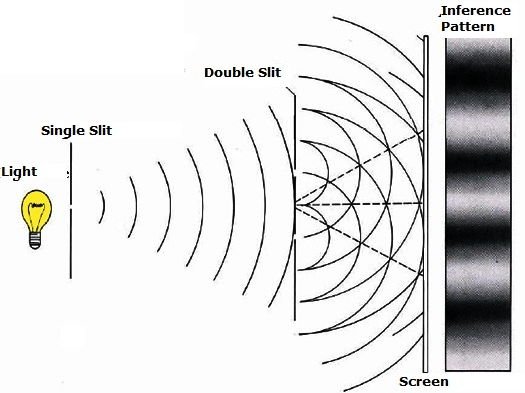Light was thought to be a stream of corpuscles (i.e, particles) that was emitted from light sources with great speed. These corpuscles were thought to behave largely in accordance with the laws of mechanics obeyed by other bodies.They were imagined to possess no weight and to be perfectly elastic.This theory, known as corpuscular theory of light, was proposed by Sir Issac Newton in 1675.This theory of light stayed around for nearly more than a century when finally it was corrected with the wave theory coming into existence.
CORPUSCULAR THEORY OF LIGHT
The corpuscular theory of light provided simple explanation of experimental facts like rectilinear propagation and reflection of light. But the explanation of the bending of light path by refraction led Newton to assume further the existence of a short range attractive force between the corpuscles and the surface.This force accelerates the corpuscles towards the surface and hence causes their path to change.This assumption (which was later proven wrong) immediately demanded that light should travel faster in denser refracting mediums, which we know today is definitely not the case. But back then since there was no way of determination of speed of light, so the accuracy of this assumption couldn't be verified and the hypothetical assumption had to stay for sometime.
WAVE THEORY OF LIGHT
The next big thing thing happened when in 1678 a Dutch physicist and astronomer, Christian Huygens, proposed that a source of light acts as a generator of waves.
Though this new wave theory successfully explained the phenomenon of rectilinear propagation,reflection and refraction yet it failed to receive any immediate acceptance in the physics community for some reasons.
All the waves known at that time invariably needed a medium for their transmission. But light from the sun and stars could travel to us through practically an empty space. So Huygens postulated the existence of an all pervading medium, called ether which was assumed to fill all empty spaces. But its existence could never be proved.
Wave theory of light demanded the phenomenon of diffraction i.e, if light were some form of wave, then it must be able to bend around all obstacles like sound does as a result of which we should be able to see around the corners, a phenomenon which is known as diffraction.
Diffraction is a common thing with sound waves,but it was very difficult to observe the same for light waves for their very short wavelengths. Even though experimental evidences of diffraction of light were discovered by Grimaldi before the wave theory even came into proposition by Huygens and the corpuscular theory of light totally failed to explain diffraction, most of scientists rejected the wave theory and went on to stick to the corpuscular theory for more than a century presumably because of Newton's reputation as a great scientist.
THE DEMONSTRATION OF INTERFERENCE BY YOUNG
The first clear demonstration of wave nature of light was made by Thomas Young, in 1801, who showed that under appropriate conditions, light plus light could produce darkness, a phenomenon known as Interference,which in no way could be explained by the corpuscular theory of light.

image source : google
In 1850, Foucault provided further evidences of the inadequacies of the corpuscular theory of light by his ingenious experiment where he showed that the velocity of light in water is less than that in air.
The wave theory was finally accepted and the corpuscular theory was abandoned.